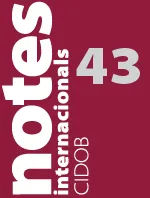Libya 2012, an inclusive affair

Notes internacionals CIDOB, núm. 43
As Egyptians participated in the first round of Parliamentary elections in a context of growing tension between the military council and protesters in the streets, a very different type of protest took place in Tripoli’s own Tahrir square. On December 7th, Martyr square filled with hundreds of protesters (among them many policemen) carrying banners that read “no weapons in Tripoli”. Protesters were not chanting slogans against the transitional authorities, as has recently been the case in Egypt or Tunisia, but against the qatibas (armed militias) that still fill the streets of Libyan cities.
The protest, despite being minor, is a clear illustration both of how different the Libyan revolution has been from others in the region such as Tunisia and Egypt, but also of how different some of the challenges that Libya faces are. After an eight-month conflict that has directly affected most of Libya’s small 6.5 million population, the main short-term challenge is not ensuring that those in positions of legal authority act responsibly, but that the hundreds of armed militias that still patrol the streets hand in their weapons.
Beyond the many signs of joy after the fall of Muammar Gaddafi’s regime, some people are concerned. In Tripoli armed clashes between militias have taken place in the past weeks. The transitional government has set deadlines for the militias to leave the city but they have been ignored. Throughout the country these semi autonomous armed groups control the streets. Former interim Prime Minister Mahmoud Jibril’s warning on October 19th that Libya risked turning “from a national struggle to chaos” and moving into “a political struggle with no boundaries” is still far off but appears closer than a few weeks ago.
Libyans generally trust the good sense of most militias and believe that they will eventually hand in their weapons, but the struggle between the transitional authorities and the militias reveals a wider more worrying reality for Libya’s transition. In the words of a youth leader from Misrata who preferred to remain anonymous: “the biggest problem right now is that the people that currently have legal authority (the politicians) don’t have power, and the people that don’t have legal authority (militia leaders) have all the power.”
(...)